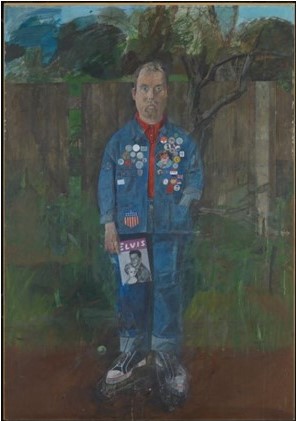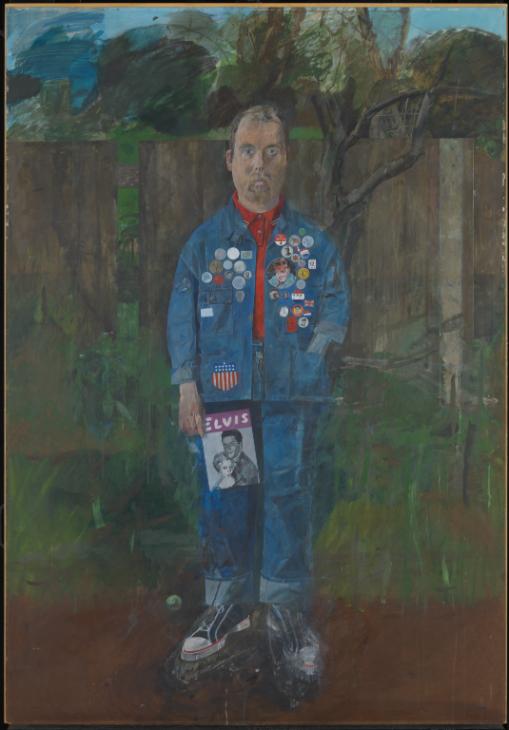
Peter Blake’s work reflects his fascination with all popular culture, and the beauty to be found in everyday objects and surroundings. Many of his works feature found printed materials such as photographs, comic strips or advertising texts, combined with bold geometric patterns and the use of primary colours. The works perfectly capture the ethos of the sixties, but are also contemporary. There is also a strain of sentimentality and nostalgia running throughout his work, with particular focus towards childhood innocence and reminiscence. Blake is renowned for his connection with the music industry, having produced iconic album covers for the Beatles, Paul Weller, The Who, and Oasis.

Analysis

This self-portrait by the then 29-year-old Blake became an instant pop art classic. Having clinched the 1961 junior John Moores painting prize, it was featured in the Sunday Times’ first colour supplement and in Ken Russell’s documentary Pop Goes the Easel.
It’s an ironic riff on Thomas Gainsborough’s The Blue Boy, its blue silk outfit replaced by denim, a fabric rich in social history. Blake’s 501s were a coveted rarity at the time, though Elvis (as depicted on the magazine Blake carries) had by then abandoned work wear in favour of tasseled satin.
The titular badges are not limited to sew-on patches celebrating American culture. Everything here is a prop recalling the symbolic attributes of portraiture. But, as stand-ins for identity, it’s all as paper thin as the magazine he’s holding.
Balding and sad-eyed, Blake seems prematurely aged. His suburban plot is both a far cry from the great plains of the American dream and Gainsborough’s 18th-century landscapes. In fact, the other art-historical shadow here is Watteau’s superlatively lonely clown, Pierrot.
My response
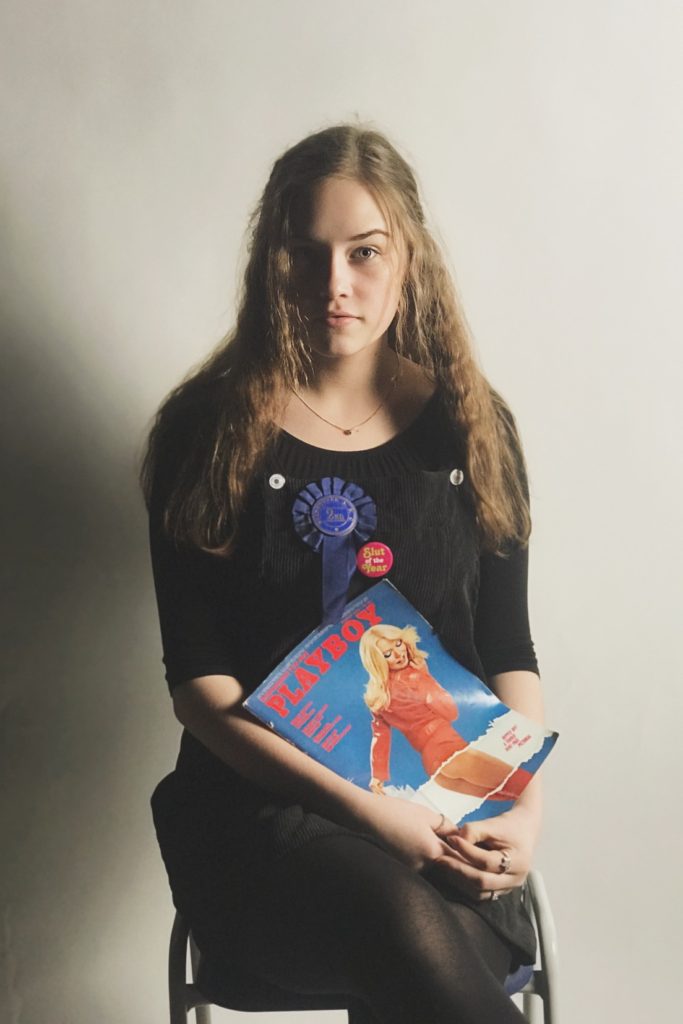

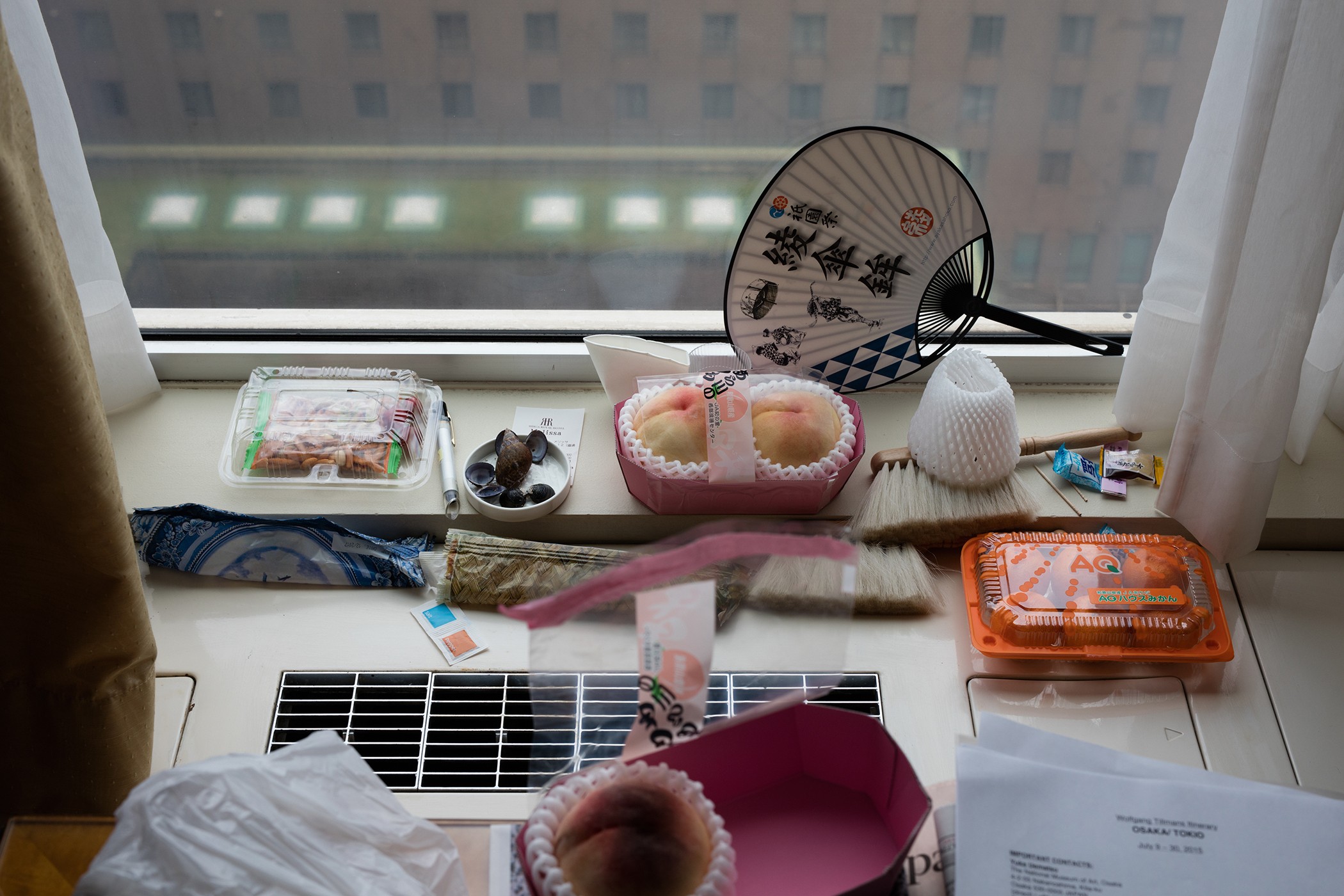
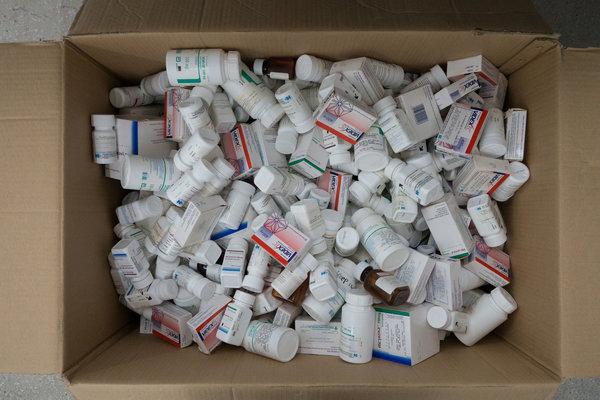
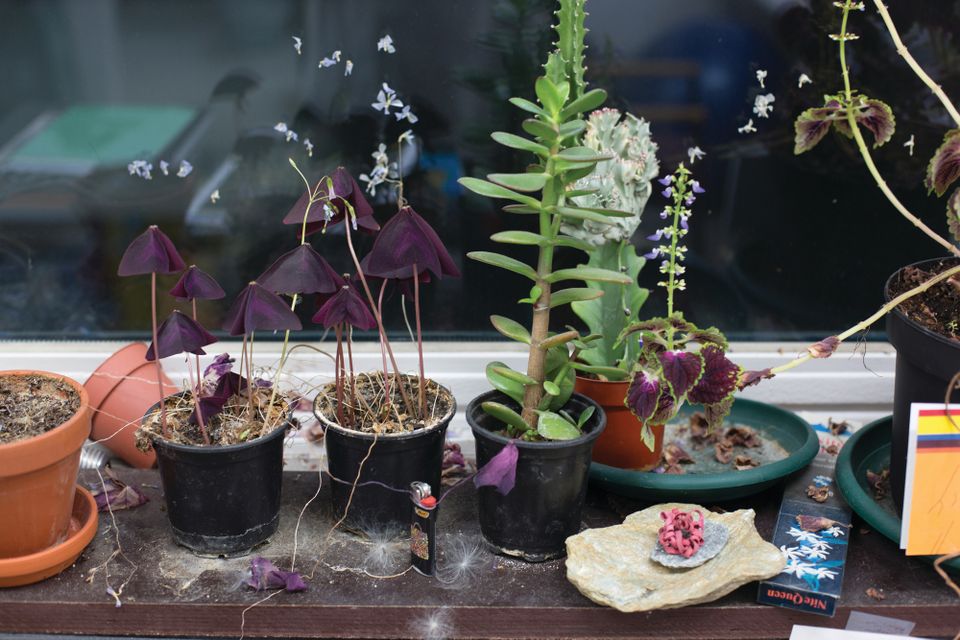
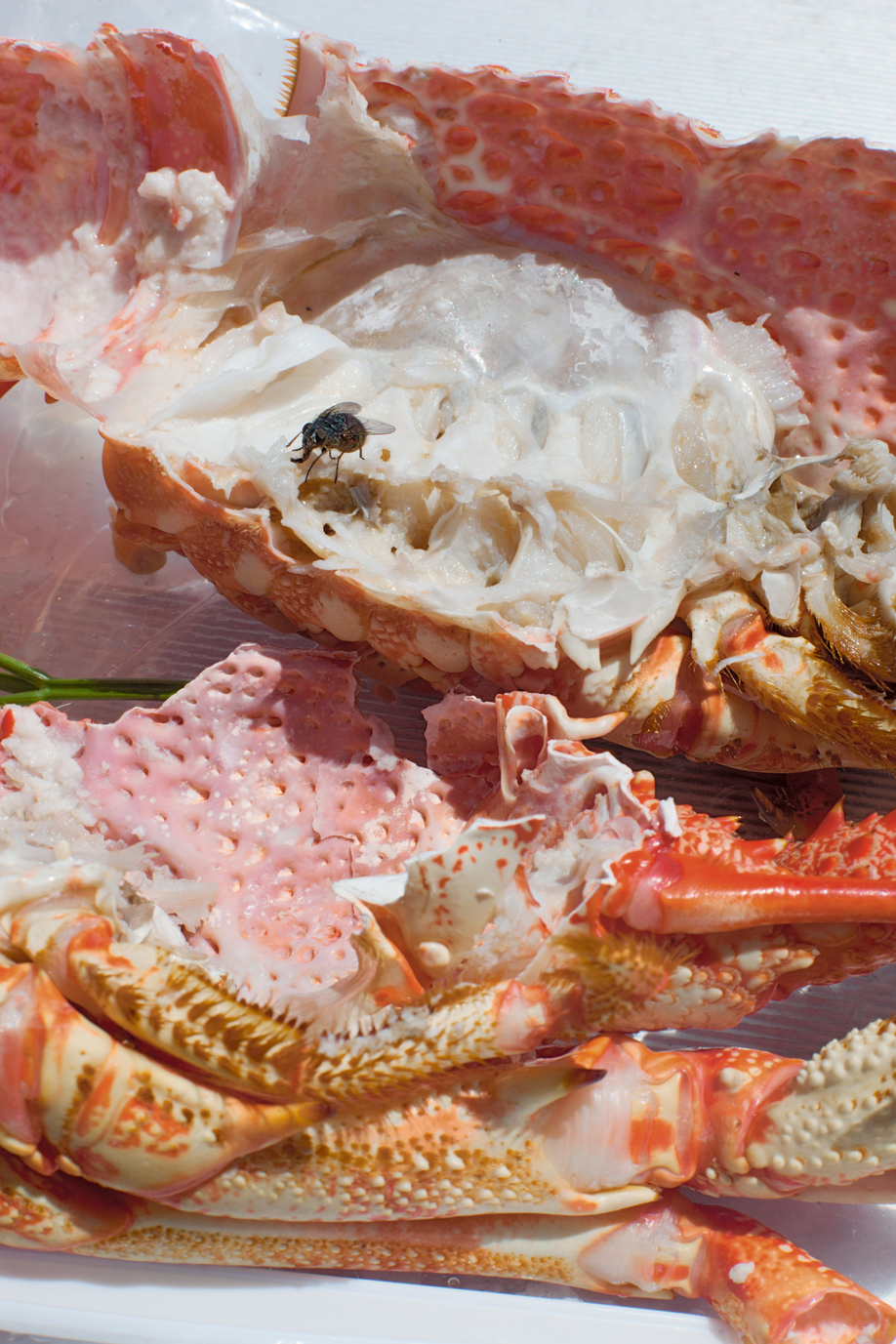 Technical
Technical










